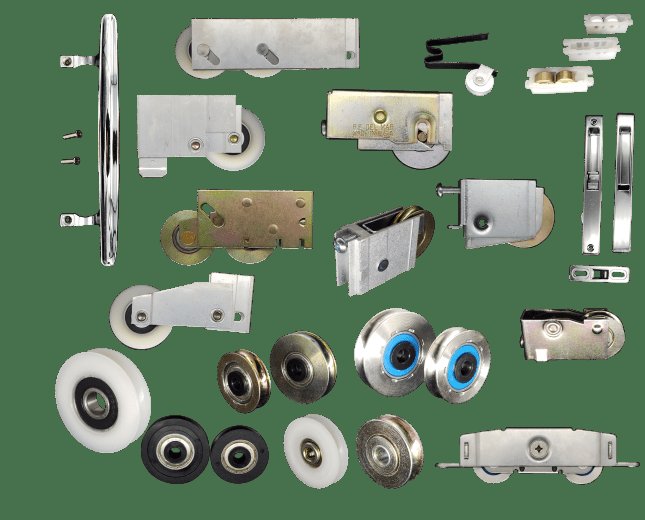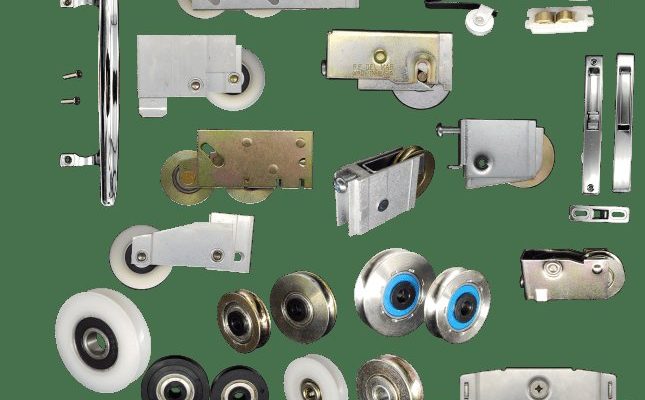
There’s a surprising variety of door rollers available, and each type is suited for different sliding systems. From simple plastic rollers to heavy-duty metal ones, knowing what options are out there can save you time, effort, and even money in the long run. Let’s dive in and explore the differences between these rollers, so you can find the best match for your specific needs.
What Are Sliding Door Rollers?
Sliding door rollers are small wheels or tracks that allow sliding doors to open and close smoothly. They’re typically located at the top or bottom of the door and guide the door along its track. Think of them as the unsung heroes of sliding doors; most people use them daily without giving them much thought. But when they wear out or malfunction, you’ll definitely notice!
The main function of door rollers is to ease the movement of the door along its track. They come in various materials, sizes, and designs, each designed for particular types of doors and usage. Choosing the right type can be crucial for a smooth operating experience.
Remember, a well-chosen roller not only helps with convenience but also impacts the overall longevity of your door system. So, let’s break down the various types to help you choose wisely.
Types of Rollers
Understanding the different types of door rollers can seem overwhelming at first. Here’s a simple breakdown of the most common options:
- Plastic Rollers
- Steel Rollers
- Ball Bearing Rollers
- Self-Adjusting Rollers
- Heavy-Duty Rollers
Let’s look at each type in detail.
Plastic Rollers
Plastic rollers are the most common type you’ll find. They’re lightweight, easy to install, and budget-friendly. Often used in interior sliding doors like closets, they can handle light to moderate use. However, they may not be the best choice for exterior doors or those that see heavy traffic.
One thing to keep in mind is that plastic rollers can wear down over time, especially if they’re constantly exposed to moisture. Think of them like a pair of inexpensive shoes; they might not last as long as a sturdy pair but can be effective in the short term. If you’re looking for something affordable and you’re not expecting heavy use, plastic rollers could be your go-to option.
Steel Rollers
Steel rollers bring durability to the table. Made from robust materials, these rollers are designed to withstand heavy use, making them ideal for exterior sliding doors like patio doors. You might picture them as the sports cars of door rollers—they’re built for speed and performance.
The downside? Steel rollers can be pricier and may add a bit more noise during operation. If you’re looking for strength and longevity, though, steel rollers are often worth the investment. Just be sure to check that they’re compatible with your door system!
Ball Bearing Rollers
Ball bearing rollers are like the luxury option in the world of door rollers. They operate smoothly and quietly, thanks to the ball bearings that allow for easy movement along the track. Imagine gliding down a ramp on a well-oiled skateboard—that’s how satisfying these can be!
These rollers are great for both interior and exterior doors, especially if you want that smooth, whisper-quiet operation. They might be slightly more expensive, but for those who prioritize quiet functionality, they can be a perfect fit.
Self-Adjusting Rollers
Self-adjusting rollers are a fantastic innovation in sliding door technology. They automatically align the door, making installation easier and ensuring the door stays level over time. This type of roller is especially helpful if you’re dealing with an uneven floor or door frame.
However, keep in mind that while these rollers can make life easier, they may not always fit every door type. It’s essential to check compatibility before committing. If you find a good match, though, you’ll appreciate the convenience they bring to the table.
Heavy-Duty Rollers
Heavy-duty rollers are designed for those tough jobs. If you have a sliding door that’s especially large or heavy, this type is what you need. They can handle significant weight and are typically made from high-quality materials like stainless steel. Think of them as the workhorses of the sliding door world.
While they’re fantastic for functionality, heavy-duty rollers might be overkill for lightweight interior doors. Choose these when you need extra strength and durability, but consider your specific use case first.
Choosing the Right Roller for Your Sliding Door
Selecting the right roller isn’t just about picking the most expensive option available. Here are a few key factors to consider:
- Type of Door: Is it interior or exterior? Heavy or light?
- Usage: Will the door see constant use or just occasionally?
- Environment: Is it exposed to moisture or extreme temperatures?
- Budget: How much are you willing to spend?
By weighing these factors, you can find the ideal roller that balances performance, durability, and cost. Remember, a well-matched roller not only enhances the door operation but also extends its lifespan.
Common Issues and Troubleshooting
Even the best door rollers can run into problems. Here are a few common issues and how to troubleshoot them:
- Door Sticking: If your door isn’t sliding smoothly, check for dirt buildup on the track or worn-out rollers.
- Noise: Unusual sounds when opening may indicate that the rollers or track need some lubrication—or that they’re simply worn out.
- Alignment Problems: If your door is misaligned, it could be due to faulty rollers. Adjust or replace them accordingly.
Addressing these issues early can prevent further damage and maintain your sliding door’s functionality over time.
Final Thoughts on Sliding Door Rollers
Choosing the right type of door rollers for your sliding system may seem daunting, but it doesn’t have to be! By understanding the various types and how they perform, you can prevent potential headaches down the line. Think of your choice as an investment in convenience and ease. Not only will the right roller keep your door gliding smoothly, but it’ll also enhance the overall aesthetic and functionality of your space.
So when it’s time for a replacement or new installation, recall what you’ve learned here. Armed with this knowledge, you’ll be ready to make the best choice for your sliding door needs. Happy sliding!
